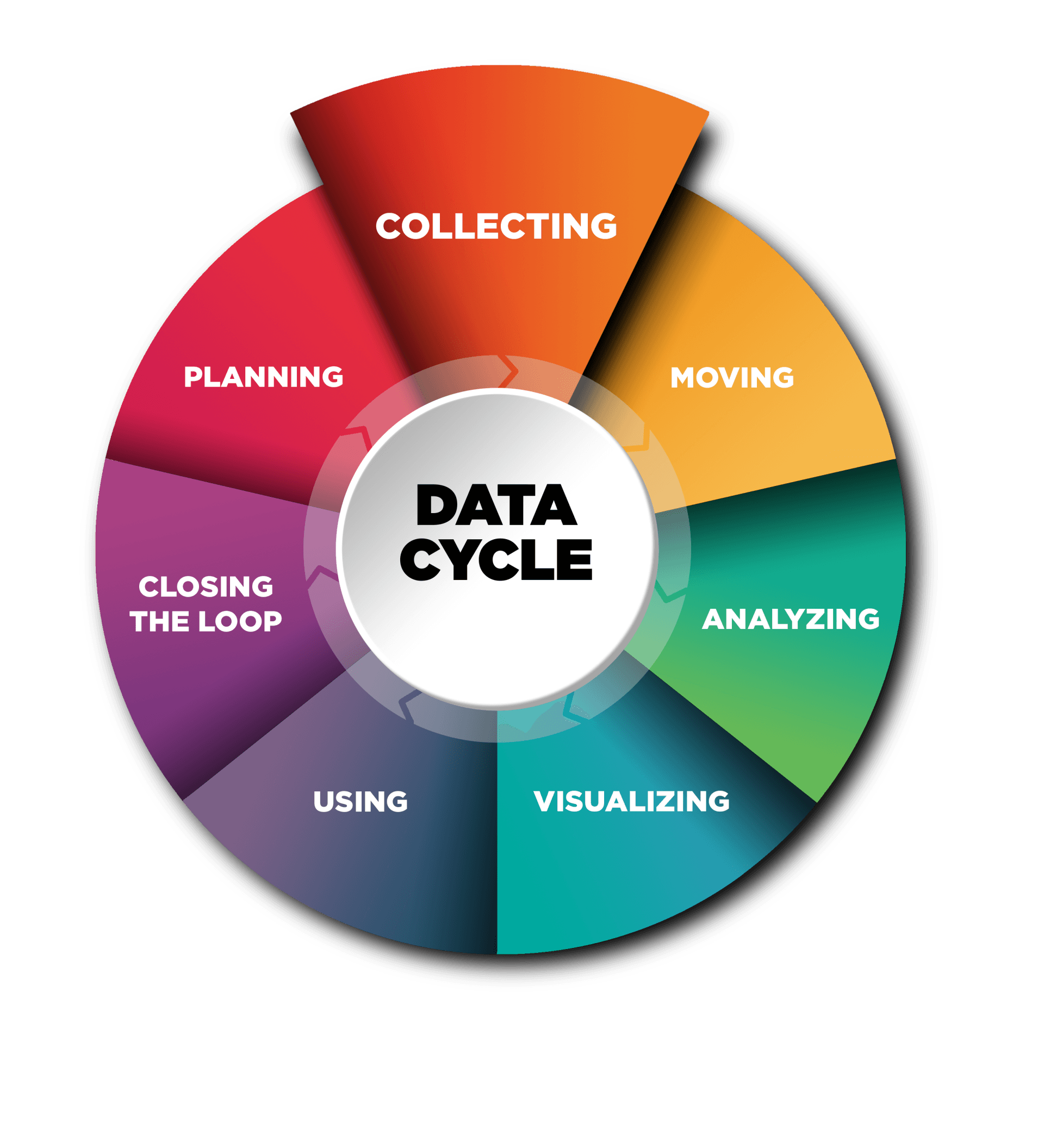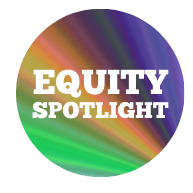Collecting
This second phase of the data cycle is identified because collecting data can be challenging and frustrating. It requires the active engagement of the program and ongoing support from those in leadership. Data collection is the systematic process of gathering data related to learning, perceptions, and goals of the program (e.g. overarching goals, strategic initiatives, etc.). The Collecting phase of the data cycle highlights the importance of and approaches to data collection strategies. Additionally, these strategies should bring attention to a shared responsibility for data collection. This step can easily be overlooked under the assumption that planning alone will meet all the requirements necessary for data collection to occur successfully. However, effective collection strategies, necessarily, involve a number of stakeholders located at various levels of leadership, distributed over the length of time specified in the planning phase. Because collection requires various individuals to work asynchronously, the need for progress monitoring is critical for success. Additionally, for a collecting strategy to be implemented successfully, it is important that it is paired with effective training, software needs that meet appropriate data use and security measures, and management strategies that are in place that address naming conventions and storage of data.
Just as planning is a shared responsibility, so is collection. Successful data analysis and usage depends on successful data collection. Considering the importance of an approach to successful data use, along with ongoing collaboration from those with leadership capacity and those collecting data, will ensure that collection remains a central focus of the program and a consistent part of regularly scheduled meetings. In order to ensure each of the elements are in place to support the successful collection of data, let’s revisit your data plan:
Review who should be involved in the collection decisions:
- Decision-Maker(s): The individuals who have the agency to make changes in the educator preparation program (e.g. Dean, department chairs, faculty etc.)
- Owner(s): The individual(s) responsible, and ultimately held accountable, for the actions/implementation of transformation (e.g. Data Managers/Data Leads)
- Champion(s): Typically members of cross-functional teams or stakeholders that you know will heavily influence the momentum of the transformation (e.g. Directors, Department Chairs, etc.)
- Implementer(s):
The individuals responsible for supporting the implementation of the plan and, in turn, those that should be heavily consulted and provide input (e.g. site coordinators, clinical faculty, etc.).
Review your “Why”
Why is data important to your program?
What are you hoping to accomplish by using data to make better decisions?
Review your program’s vision
What are your goals as a program and how can data support the realization of those goals? What strengths within your program can you leverage to improve how you think about and use data?
Set the Course
What data is needed to support better decision-making (be specific)? Who will need to be involved/enrolled? How will the collection of the data highlight both areas of strength and opportunities for improvement?
The Collection Plan has likely already been identified in the Planning Phase, but having resources available to support data collection early will help ensure that the data is collected. Below are a few sample resources that a program can leverage in the collection phase. After you’ve identified who will be involved in and have built rationale for data collection, you’ll need to ensure that you communicate, train and support, and provide data management software to enable data collection to occur in a way that is streamlined for all stakeholders.
In the self assessment below you will have an opportunity to record who, from your program stakeholders, are involved in implementing the data cycle. You will then be able to identify the portion of your budget that is currently allotted to that role.
*click to download... requires adobe reader plugin to open
Now that you’ve completed the assessment, take a look back at both the roles and the budget. What stands out to you? Are the roles and budgets aligned to your data priorities? What needs to be adjusted and who needs to be involved?
Below are three strategies for building rationale.
Communication
Maintaining communication with those collecting data is essential. You can leverage the steps found in the
US PREP Communication Plan to ensure all stakeholders have the information they need, and when they need it. While communication is noted here in the collecting step, communication is an essential aspect of making data informed decisions aligned to your transformation efforts and program goals throughout the data cycle. The first resource example is an email US PREP uses at the beginning of the year to initiate data collection. This resource can be adapted for the individual program level. The second is an email requesting participation from stakeholders (e.g. candidates, mentor teachers, principals, Site Coordinators, etc.) in one of our surveys, along with instructions. The third resource is an example of what could be sent to your district partners to share what, when, and how data will be collected and used in partnership to transform your educator preparation program.
Training & Support
As stated throughout this toolkit, US PREP leverages the local expertise of each program for collecting candidate level data. These could be data leads, site coordinators, clinical faculty, certification managers, etc. Each role needs training and support to collect the data needed to inform decisions. US PREP works closely with Data Leads throughout the year, in which Data Leads then work with a range of stakeholders across their educator preparation programs and partnering districts. Below is the agenda for monthly Data Lead meetings. Individual educator preparation programs can reference this agenda as well as an example of a
Data Governance meeting.
Data Management
Data management includes software and data collection platforms, integration of institutional and program level policies and procedures, permission oversight, and storage protocols that promote effective data use for continuous improvement. In the next step, Moving, you’ll begin to identify the advantages and drawbacks to various data platforms. US PREP leverages SharePoint as our primary data management platform. SharePoint is the primary interface for programmatic and candidate level data collection. Through the use of PowerBI and other add ons, SharePoint is quickly becoming a powerful tool for US PREP and its coalition of educator preparation programs.
We have provided, below, the Primary Data Sheet US PREP uses. This will allow you to see what candidate level data is housed within our SharePoint resources. If you’d like to learn more about SharePoint, reach out to us
here.
Data Sharing Agreements
Data Sharing Agreements (DSAs) are contracts that specify what data are being shared and between whom, and the appropriate use for the data collected. DSAs are essential to ensure that each party uses the data as intended, the data is held confidentially, securely, and is shared in a way that is agreed upon by both parties. Below is an example Memorandum of Understanding that includes a DSA.
Why is collecting data within the cycle essential to DEI?
The Charles and Lynn Schusterman Family Philanthropies has curated a comprehensive set of best practices or recommendations to guide the collection of demographic data, a sensitive yet essential step in prioritizing DEI. You can download this resource
here.
Pause and Process
At the end of each section of the US PREP Data Toolkit we will ask a few brief questions for you to consider on your journey. Once you have completed all the Pause and Process Sections, you can continue to the next step in the Data Toolkit.



